Related Research Articles
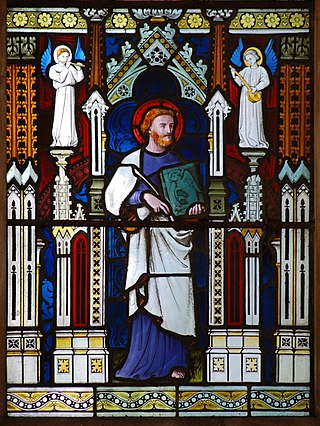
Luke the Evangelist is one of the Four Evangelists—the four traditionally ascribed authors of the canonical gospels. The Early Church Fathers ascribed to him authorship of both the Gospel of Luke and the Acts of the Apostles. Prominent figures in early Christianity such as Jerome and Eusebius later reaffirmed his authorship, although a lack of conclusive evidence as to the identity of the author of the works has led to discussion in scholarly circles, both secular and religious.

Saint Helena is a British overseas territory located in the South Atlantic Ocean. It is a remote volcanic tropical island 1,950 kilometres west of the coast of south-western Africa, and 4,000 kilometres (2,500 mi) east of Rio de Janeiro in South America. It is one of three constituent parts of the British Overseas Territory of Saint Helena, Ascension and Tristan da Cunha.

In religious belief, a saint is a person who is recognized as having an exceptional degree of holiness, likeness, or closeness to God. However, the use of the term saint depends on the context and denomination. In Catholic, Eastern Orthodox, Anglican, Oriental Orthodox, and Lutheran doctrine, all of their faithful deceased in Heaven are considered to be saints, but some are considered worthy of greater honor or emulation. Official ecclesiastical recognition, and consequently a public cult of veneration, is conferred on some denominational saints through the process of canonization in the Catholic Church or glorification in the Eastern Orthodox Church after their approval.
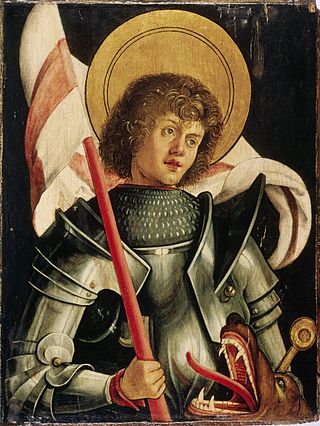
Saint George, also George of Lydda, was a Christian who is venerated as a saint in Christianity. According to tradition he was a soldier in the Roman army. Saint George was a soldier of Cappadocian Greek origin and member of the Praetorian Guard for Roman emperor Diocletian, who was sentenced to death for refusing to recant his Christian faith. He became one of the most venerated saints and megalomartyrs in Christianity, and he has been especially venerated as a military saint since the Crusades. He is respected by Christians, Druze, as well as some Muslims as a martyr of monotheistic faith.
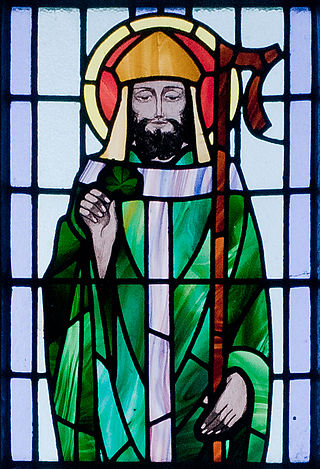
Saint Patrick's Day, or the Feast of Saint Patrick, is a religious and cultural holiday held on 17 March, the traditional death date of Saint Patrick, the foremost patron saint of Ireland.

James the Great, also known as James, son of Zebedee, Saint James the Great, Saint James the Greater, Saint James the Elder, or Saint Jacob, was one of the Twelve Apostles of Jesus. According to the New Testament, he was the second of the apostles to die, and the first to be martyred. Saint James is the patron saint of Spain and, according to tradition, his remains are held in Santiago de Compostela in Galicia.
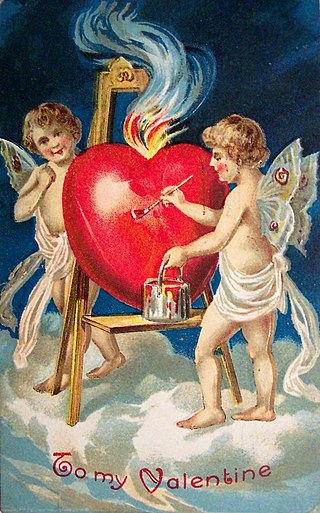
Valentine's Day, also called Saint Valentine's Day or the Feast of Saint Valentine, is celebrated annually on February 14. It originated as a Christian feast day honoring a martyr named Valentine and through later folk traditions, it has also become a significant cultural, religious and commercial celebration of romance and love in many regions of the world.

Saint Christopher is venerated by several Christian denominations as a martyr killed in the reign of the 3rd-century Roman emperor Decius, or alternatively under the emperor Maximinus Daia. There appears to be confusion due to the similarity in names "Decius" and "Daia". Churches and monasteries were named after him by the 7th century.
This gallery of sovereign state flags shows the national or state flags of sovereign states that appear on the list of sovereign states. For other flags, please see flags of active autonomist and secessionist movements, flags of extinct states and gallery of flags of dependent territories. Each flag is depicted as if the flagpole is positioned on the left of the flag, except for those of the Islamic Emirate of Afghanistan, Iran, Iraq, and Saudi Arabia, which are depicted with the hoist to the right.

A society of apostolic life is a group of men or women within the Catholic Church who have come together for a specific purpose and live fraternally. It is regarded as a form of consecrated life.

Saint Patrick was a fifth-century Romano-British Christian missionary and bishop in Ireland. Known as the "Apostle of Ireland", he is the primary patron saint of Ireland, the other patron saints being Brigid of Kildare and Columba. Patrick was never formally canonised, having lived before the current laws of the Catholic Church in these matters. Nevertheless, he is venerated as a saint in the Catholic Church, the Lutheran Church, the Church of Ireland, and in the Eastern Orthodox Church, where he is regarded as equal-to-the-apostles and Enlightener of Ireland.
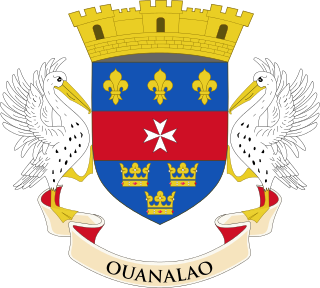
.bl is an Internet country code top-level domain (ccTLD) that was to be created for Saint Barthélemy, following the decision on 21 September 2007 by the ISO 3166 Maintenance Agency to allocate BL as the ISO 3166-1 alpha-2 code for Saint Barthélemy. This decision followed Saint Barthélemy's new status as an Overseas collectivity of France which took effect on 15 July 2007. Currently Saint Barthélemy uses Guadeloupe's ccTLD, .gp, and France's ccTLD, .fr.
Saint-Élix-Séglan is a small rural village and commune in the Haute-Garonne department in southwestern France. It is best known for the castle which dominates the village.

Saint-Julien-sur-Garonne is a commune in the Haute-Garonne department in southwestern France.

Pont-Sainte-Maxence is a commune in the Oise department in northern France, in the region of Hauts-de-France. It is named after Saint Maxentia of Beauvais, whose relics were taken here. Pont-Sainte-Maxence station has rail connections to Saint-Quentin, Compiègne, Creil and Paris.

The Caribbean is a subregion of the Americas that consists of the Caribbean Sea and its islands, the nearby coastal areas on the mainland may also be included. The region is southeast of the Gulf of Mexico and the North American mainland, east of Central America, and north of South America.
Saint Lucian cuisine is a combination of French, East Indian and British dishes. Before colonization, the Caribs and the Arawaks occupied the island, surviving on its various natural fruits and vegetables like mangoes, oranges, tangerines, avocados, and breadfruits.

Lutheranism is a major branch of Protestantism, identifying primarily with the theology of Martin Luther, the 16th-century German monk and reformer whose efforts to reform the theology and practice of the Catholic Church launched the Protestant Reformation. The reaction of the government and church authorities to the international spread of his writings, beginning with the Ninety-five Theses, divided Western Christianity. During the Reformation, Lutheranism became the state religion of numerous states of northern Europe, especially in northern Germany, Scandinavia and the then-Livonian Order. Lutheran clergy became civil servants and the Lutheran churches became part of the state.

Saint Petersburg, formerly known as Petrograd (1914–1924) and later Leningrad (1924–1991), is the second-largest city in Russia. It is situated on the Neva River, at the head of the Gulf of Finland on the Baltic Sea. The city had a population of roughly 5.4 million residents as of 2020. Saint Petersburg is the fourth-most populous city in Europe, the most populous city on the Baltic Sea, and the world's northernmost city of more than 1 million residents. As Russia's Imperial capital, and a historically strategic port, it is governed as a federal city.

Saint Kitts and Nevis and the United Kingdom have a long history of colonial activity and later diplomatic relations.
References
- ↑ Butler, Alban (1798). The Lives of the Primitive Fathers, Martyrs, and Other Principal Saints: Compiled from Original Monuments, and Other Authentic Records: Illustrated with the Remarks of Judicious Modern Critics and Historians. Edinburgh: J. Muir. pp. 141–142.
- ↑ Farmer, David (1978). The Oxford Dictionary of Saints. p. 226. ISBN 0-19-280058-2.